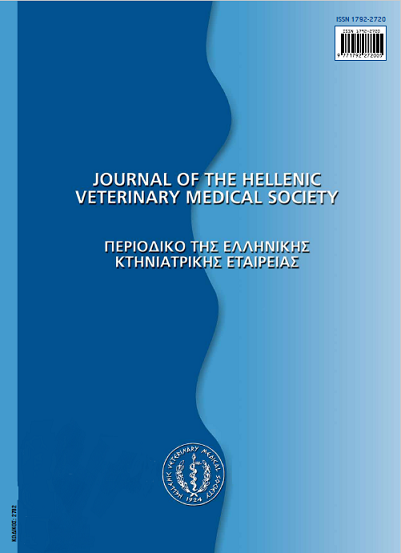The effect of vitamin E on mast cells in small intestine of broilers under heat stress

Abstract
The aim of this study is to identify the effect of vitamin E (DL-α-tocopherol acetate) (300 IU/kg) on mast cells in the small intestine (duodenum, jejunum and ileum) under heat stress. In the study, 42 one-day-old Ross 308 male broiler chicks were used. The chicks were randomly separated into 3 groups as follows; control (22±2°C), heat stress (35°C, 5 hours/per day) and vitamin E (300 IU/kg/per day) + heat stress (35°C, 5 hours/per day). The applications of heat stress and vitamin E began on the fifteenth day and ended on the thirty-fifth day. Tissue samples were taken from animals in each group of four and five-week-old chickens. Tissue samples were fixed in BLA (Basic Lead Acetate) solution. The sections were stained with toluidine blue (TB) (pH 0.5) and alcian blue-critical electrolyte concentration (AB-CEC) (pH 5.8, 0.3 M MgCl2) / Safranin O (SO) (pH 1.0) combined method. It was determined that increasing of the exposure duration to heat stress increased the number of mast cells in the small intestine of the boilers. Also, it was revealed that vitamin E reduced mast cell population under heat stress. Consequently, heat stress may play a role in the pathogenesis of small intestine-associated with disorders and the supplementation of vitamin E can contribute to regulate small intestine functions of broilers by decreasing mast cell proliferation and activation under heat stress.
Article Details
- How to Cite
-
YILDIZ, M., KUM, S., & EREN, U. (2018). The effect of vitamin E on mast cells in small intestine of broilers under heat stress. Journal of the Hellenic Veterinary Medical Society, 68(2), 159–166. https://doi.org/10.12681/jhvms.15600
- Issue
- Vol. 68 No. 2 (2017)
- Section
- Research Articles

This work is licensed under a Creative Commons Attribution-NonCommercial 4.0 International License.
Authors who publish with this journal agree to the following terms:
· Authors retain copyright and grant the journal right of first publication with the work simultaneously licensed under a Creative Commons Attribution Non-Commercial License that allows others to share the work with an acknowledgement of the work's authorship and initial publication in this journal.
· Authors are able to enter into separate, additional contractual arrangements for the non-exclusive distribution of the journal's published version of the work (e.g. post it to an institutional repository or publish it in a book), with an acknowledgement of its initial publication in this journal.
· Authors are permitted and encouraged to post their work online (preferably in institutional repositories or on their website) prior to and during the submission process, as it can lead to productive exchanges, as well as earlier and greater citation of published work.


